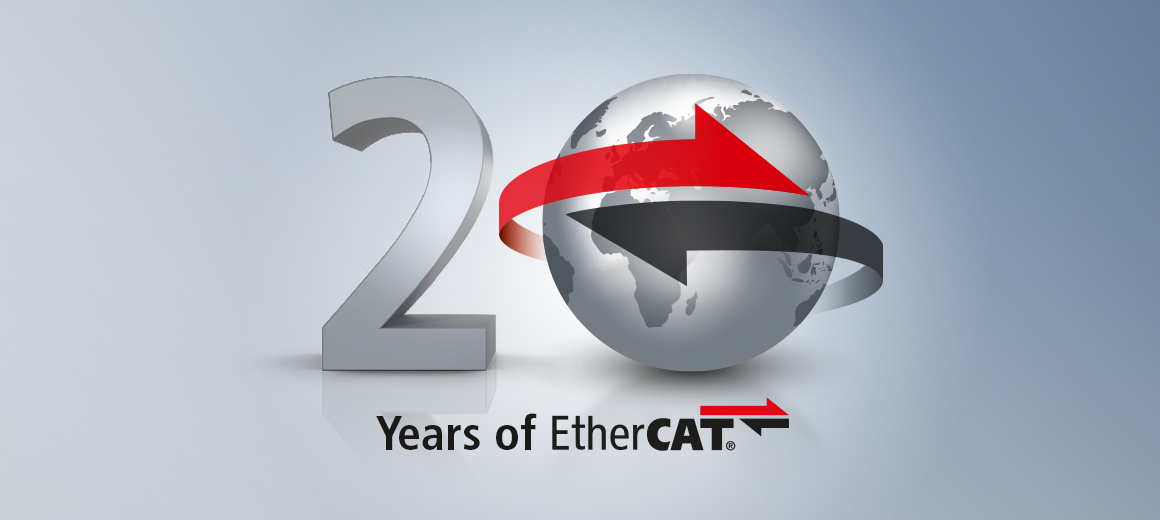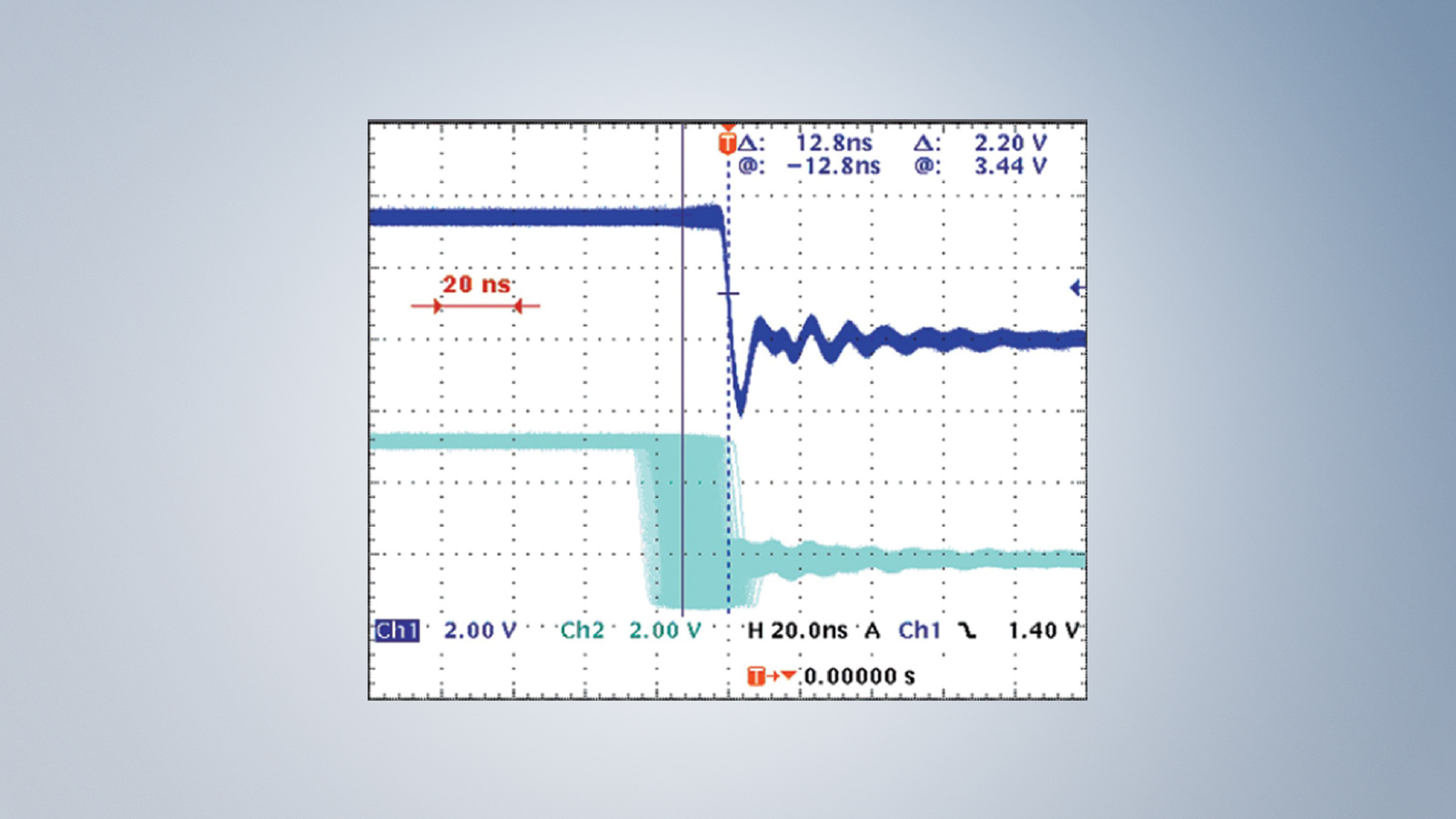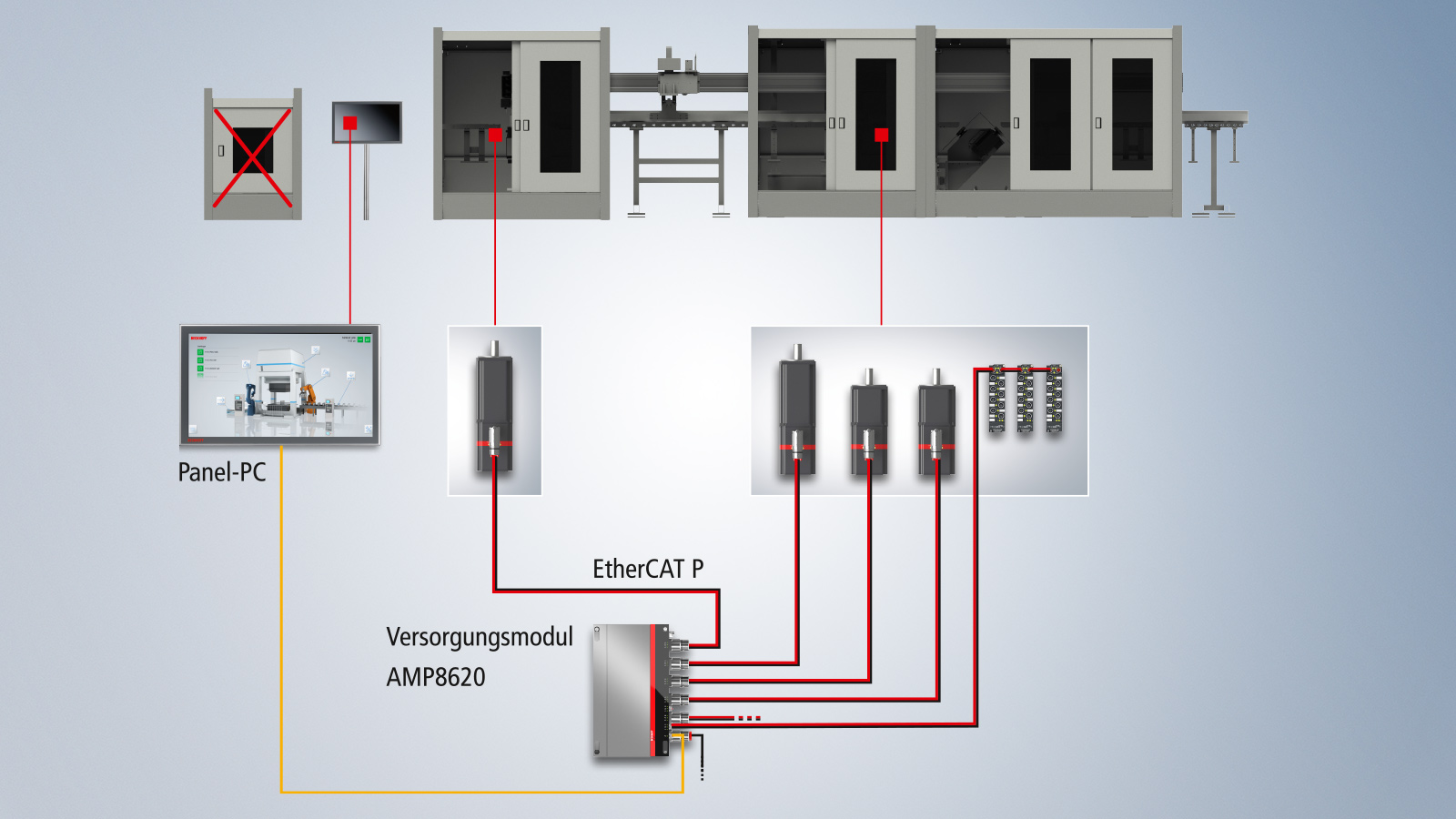

Interview with Dr. Guido Beckmann on 20 years of EtherCAT in the motion control environment
Over the last 20 years, EtherCAT has successfully cemented its position as an ultra-fast communication system, making significant strides across all areas of automation. This feat has been achieved particularly quickly and comprehensively in the motion environment, addressing its demanding criteria in terms of transmission speed, synchronicity, diagnostic options, and various other factors. Dr. Guido Beckmann, Senior Management Control System Architecture at Beckhoff and Head of the ETG technical committee, was happy to share his insights and perspective in the following interview.

Guido, how long have you been involved in EtherCAT development at Beckhoff and what have been your main tasks over the years?
Dr. Guido Beckmann: My Beckhoff career began back in 2006 when I started out in EtherCAT technology management. I already had a strong background in industrial communication and fieldbuses, so when Beckhoff introduced EtherCAT technology in 2003, I was enthusiastic about its features right from the start. I have been head of the technical committee for EtherCAT Technology Group (ETG) since 2007 and am also responsible for various working groups, notably those relating to Safety over EtherCAT technology and drive profiles. On the Beckhoff side, I also evaluate new technologies for control architectures, which includes looking at the properties and possible applications of the 5G mobile communications standard, emerging communication standards in the field of time-sensitive networking (TSN), and the use of OPC UA for manufacturer-independent control communication.
What particular challenges has the motion aspect brought to your work with EtherCAT?
Dr. Guido Beckmann: Excellent performance, flexible topology, and simple configuration characterize EtherCAT as an Ethernet fieldbus with motion control capabilities. In highly dynamic motion applications, the system’s fundamental attributes include short cycle times and precise synchronization. This means that, with the help of EtherCAT, the coordinated movements of multiple servo axes can be precisely matched within an application simultaneously with the evaluation of sensor data and the control of digital or analog signal output.
EtherCAT has now asserted itself as the most important motion fieldbus. Which technological features were instrumental in making this possible?
Dr. Guido Beckmann: That’s right – it has. We are now aware of over 200 drive manufacturers that support an EtherCAT interface, offering users well over 1,000 different EtherCAT drive devices for their own applications. Fieldbus systems face stringent demands in terms of drive technology, most notably including cycle time, synchronicity, and simultaneity. Typical values for the necessary cycle times lie between 1 ms and 500 µs, with a moderate 2 ms in some applications (in reference to the cyclic position specification with position control in the drive). In extreme cases, however, cycle times of 62.5 μs are also required (for a current control loop closed via bus). While synchronicity describes the temporal jitter during executing the functions in the devices involved (drives and controllers), simultaneity defines the measure of temporal offset of these functions. EtherCAT uses an approach based on what we call "distributed clocks" for synchronization control: All devices have an independent clock as a basis for running local cycles and events. The crucial factor is that all clocks run at the same speed and have the same base time. A special control integrated in the EtherCAT Slave Controller (ESC) ensures that all clocks are guided by a reference clock and are synchronized irrespective of temperature and production tolerances. The necessary simultaneity of all clocks is achieved by means of a run-time measurement of the signal from the reference clock to each synchronized device, which is also supported by the ESC in terms of hardware. Comprehensive measurements have shown that the deviations are well below 100 ns for both synchronization and simultaneity – even for large networks.

High-performance technology should also be as easy to use as possible, which has been achieved exceptionally well with EtherCAT. In relation to motion applications, which attributes are particularly advantageous in terms of aspects such as engineering and diagnostics?
Dr. Guido Beckmann: When it comes to supporting drive technology, key factors of a fieldbus system include the communication protocol and profile used, which are responsible for compatibility and efficient data exchange between controller and drive. The drive profile most commonly used in drive technology is the CiA402 profile developed by CAN in Automation. It was mapped to EtherCAT at an early stage (IEC 61800-7-3) and is supported by virtually all EtherCAT servo drives, which allows them to be automatically detected and integrated into the motion control application. It also meant that the complete tool chain and existing experience with the parameterization of associated drives could be maintained. Unlike traditional fieldbuses, EtherCAT makes it possible to achieve very short cycle times. In response to this capability, ETG introduced new operating modes in the specification to support cycle-synchronous transmission of position, speed, and torque process data. This made it possible to relocate the functionality of the setpoint generator, which was previously integrated into more complex drive controllers, to the central motion controller. It also simplifies the functionality of the drive amplifiers and enables coordinated motion control of multiple (coupled) drives in a machine on the central motion controller.
How important are the OCT (One Cable Technology) and EtherCAT P single-cable solutions for the motion area and what are the specific application advantages, especially with regard to EtherCAT technology?
Dr. Guido Beckmann: It is important to distinguish between two different technologies here. With OCT, Beckhoff offers an innovative solution for connecting servomotors to a servo drive. OCT is a modified motor cable that uses the two thermal contact wires for encoder communication, thereby eliminating the need for an additional feedback line. Other solutions with an additional encoder cable or a hybrid cable solution with additional cores are much more difficult to assemble, as well as being more expensive to purchase and install. EtherCAT P is a technology standardized by ETG that combines EtherCAT communication and power in a 4-core standard Ethernet cable. The 24 V DC supply of the EtherCAT P slaves and the connected sensors and actuators is integrated: US (system and sensor power supply) and UP (peripheral voltage for actuators) are electrically isolated from each other with an available current of up to 3 A each for the connected components. All the benefits of EtherCAT are retained, such as the free topology, high speed, optimum bandwidth utilization, on-the-fly processing of telegrams, high-precision synchronization, and extensive diagnostics. For high-power applications such as those as required in drive technology, Beckhoff also provides standardized hybrid cables with bayonet connectors. These integrate an EtherCAT P core with additional cores to supply devices ranging from 24 V sensors through to 600 V drives. Both of these technologies – OCT and EtherCAT P – offer the advantage of simplified wiring within the machine and, above all, a reduced number of cables.
How important is EtherCAT communication for the decentralized motion solutions AMP8000 and AMI8000?
Dr. Guido Beckmann: This is exactly where the advantages of the EtherCAT P hybrid cables come into play. In these decentralized systems, the concept of control cabinet-free drive technology is consistently implemented. The decentralized motor-integrated servo drives can be connected to a decentralized supply module with one supply port and five motor circuits, and an EtherCAT P hybrid cable is used for communication and power supply to the drives. This all results in significant savings in terms of material, installation space, costs, and installation work.
The Beckhoff Motion range is incredibly diverse and includes the compact drive technology portfolio in I/O terminal format, which is celebrating its 10th anniversary this year. Are there any specific EtherCAT properties that offer notable advantages to this design format?
Dr. Guido Beckmann: In the case of compact drive technology from Beckhoff, the end-to-end EtherCAT communication is definitely worth a mention. Here, the drive amplifiers for servo, DC, BLDC, and stepper motors are designed as EtherCAT E-bus terminals, which means they are connected in an I/O bus segment to an EtherCAT Coupler. The special feature of EtherCAT technology lies in the fact that the EtherCAT frame does not have to be implemented within the bus coupler to be forwarded to an internal backplane bus. Instead, all E-bus terminals contain an EtherCAT slave controller and are therefore independent EtherCAT devices. This means that all the advantages of EtherCAT in terms of performance, synchronicity, and simultaneity are also available for our compact drive technology.

To what extent do the intelligent product transport systems XTS and XPlanar benefit from EtherCAT?
Dr. Guido Beckmann: The key word here is performance. The EtherCAT operating principle offers ample bandwidth for short cycle times. What’s more, through on-the-fly data exchange and logical addressing of many (or all) devices in a single frame, the bandwidth of 100 Mbit/s is virtually entirely available in the EtherCAT segment without compromising real-time capability. Another factor is that only one EtherCAT frame is required to set output data, and input data can be read in again at the same position in the frame at the same time, virtually doubling the bandwidth. With the XTS linear transport system, Beckhoff offers a drive solution in which magnetically driven movers move along a path of fully integrated motor modules. The integration of a conventional linear motor with power output stages and position detection into the motor module enables compact and flexible set-up of intelligent transport systems. Since each motor module contains a large number of individual coils and feedback sensors, a vast amount of data has to be transmitted from the controller to each module and back within each control cycle (250 µs) – and that’s a task only EtherCAT can handle. XPlanar is a planar motor, which – like rotary motors – consists of multiple stationary, energized coils (in the tiles) and mobile permanent magnets (in the movers). In contrast to rotary motors, however, both the coils and the permanent magnets are arranged two-dimensionally on a plane. The XPlanar tiles are the electrically active part of the system, with the current in their coils causing the movers to float above them. With its bandwidth demands surpassing 100 Mbit/s and exceeding those of XTS, the XPlanar system makes use of the EtherCAT G technology expansion that was introduced in 2018. EtherCAT G builds on the successful EtherCAT concept and is now capable of processing telegrams on the fly at a rate of 1 Gbit/s.
The modular industrial robot system ATRO is also based on EtherCAT communication. What advantages does this offer here, in terms of both setting up the kinematics and in robot operation?
Dr. Guido Beckmann: ATRO (Automation Technology for Robotics) represents the latest system in the Beckhoff drive technology range. This modular industrial robot system can be used to assemble optimal robot structures for different applications on an individual and flexible basis: Standardized motor modules with integrated drive functionality, together with link modules in various designs and lengths, enable almost limitless combinations of mechanical elements. The active motor modules are decentralized EtherCAT servo drives. To achieve highly dynamic and precise robot movement and positioning, all motor modules have to be supplied with new setpoints by the controller in short control cycles. The accuracy of synchronizing the movement of all modules is crucial to how accurately a path can be maintained. Their seamless integration into the Beckhoff architecture allows ATRO robots to be combined directly with intelligent transport solutions such as XTS and XPlanar. What’s more, the extremely powerful overall package can be configured in a compact machine design, thus minimizing its footprint. All components are fully synchronized through EtherCAT, and implementing highly dynamic pick-and-place applications is no problem, since movements are coordinated on the fly – based on EtherCAT.
Even after 20 years, EtherCAT is an innovative and future-proof technology. How much potential does it still have from the point of view of motion applications, and what significance will technology expansions such as EtherCAT G and G10 achieve in the medium and long term?
Dr. Guido Beckmann: First of all, I can’t emphasize enough that EtherCAT is still the fastest Ethernet-based communication technology on the market – even after 20 years. And this is also in comparison with other technologies that are already based on Gigabit Ethernet. Since it launched in 2003, the outstanding performance of EtherCAT has met virtually all user requirements in countless industries and applications. Some special applications in the field of machine vision, condition monitoring, or even the innovative XTS and XPlanar transport systems require several hundred bytes of process data per cycle for each device. With EtherCAT G, these applications can now be operated with an EtherCAT G master, and additional automation devices or drives can be integrated at the same time. At this point, I have to mention the introduction of what we call the branch concept, where the branch devices enable the integration of 100 Mbit/s Ethernet segments into an EtherCAT G network. This ensures the unique device diversity of the EtherCAT world remains available even when using EtherCAT G, and no 100 Mbit/s device will become obsolete or even unusable due to EtherCAT G. On the contrary, the robust and proven 100 Mbit/s data transmission will remain the physical layer of choice for almost all devices in EtherCAT in the future. The branch concept also offers another major efficiency advantage in that each branch is regarded as an independent EtherCAT segment. By this, I mean that a telegram does not pass through all segments one after the other, but rather the segments at the branch ports are processed in parallel. This significantly reduces hardware-related propagation times in large networks.
Speaking of innovation, are you able to reveal any new motion functionalities that the EtherCAT team is currently working on?
Dr. Guido Beckmann: We have just extended the EtherCAT specification with what is known as a dynamic process data channel (DPC). This makes it possible to temporarily read or write cycle-synchronous process data from a device during operation. For drive functionality, this can be used to record a Bode plot during commissioning to optimize the controller parameters.

